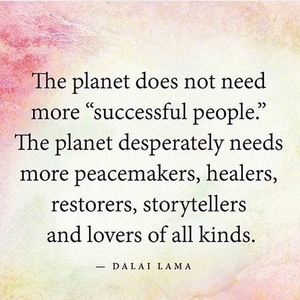Integrating the Heart-Mind Well-Being Framework into Teaching Practice

This week I have been thinking about how to integrate something like the Heart-Mind Well-being Framework into my own practice. My thoughts and conceptualizations of social and emotional learning and teaching have become a two-fold approach to teaching such qualities and concepts.
The first part of the approach is to explicitly teach components of social and emotional learning. In my practicum class we called these “social responsibility” lessons; they are lessons where students are taking a closer look at emotions, relationships, goal setting, interactions, and anything else that relates to their social and emotional well being. The Dalai Lama Center’s Heart-Mind Online hosts many fantastic resources for incorporating these types of introductory lessons into your classroom! Many of them are the types of lessons that I will use in the first month of school as I work with students to create a safe and caring classroom environment.
Teaching Kindness with Chrysanthemum
Skits to Solve Problems Peacefully
(These learning resources and more can be found at heartmindonline.org)
One of the major parts of my work with the Dalai Lama Center during my UBC Community Field Experience has been to begin making the links between the Heart-Mind Framework and the BC Revised Curriculum more visible for educators. By starting to think of the type of criteria that certain competencies must fulfill in order to support Heart-Mind well-being, we are able to see the places where we can support the development of the five Heart-Mind qualities more clearly. Eventually, I hope to make these connections explicit and to help provide teachers with resources that they can use to help them to integrate Heart-Mind well-being and social emotional learning into “every day” learning.
My work with the Heart-Mind framework and the revised curriculum is closely aligned with what I believe is the second ‘fold’ in the two-fold approach to SEL. I think that using the first type of lesson on its own can result in “one-off” lessons that do not resonate throughout the day-to-day learning in the classroom. I would suggest that the second part to social and emotional learning, then, is to provide students with opportunities to develop the qualities associated with social and emotional wellbeing throughout their daily activities in the classroom. I think that activities like group work, reflective writing, peer assessment, collaborative, associative, and parallel play, goal setting, and many other elements of students’ days to be wonderful opportunities to develop skills needed to live a socially and emotionally healthy life!
Fortunately, the revised curriculum encourages many of these pedagogical approaches (collaboration, communication, positive personal and cultural identity) within the core and curricular competencies, allowing teachers to ground social and emotional learning in the curriculum as well as the research that is being conducted by organizations like the Dalai Lama Center and the UBC Human Early Learning Partnership.
Of course, there are other elements as well. A positive classroom community where you can incorporate such types of learning will have a foundation in social and emotional learning. Classroom culture will be built through teaching in a socially and emotionally responsible way, and students themselves will take on responsibility for social and emotional well-being.
By Elizabeth Greenwood, UBC Teacher Candidate






Comments
Post new comment